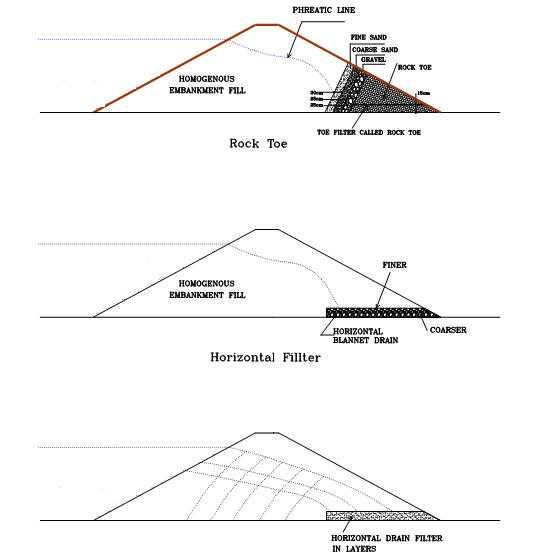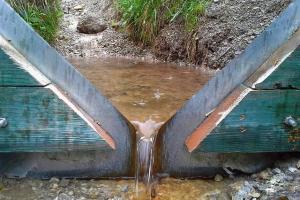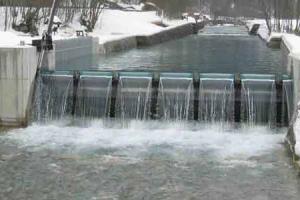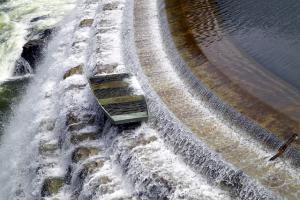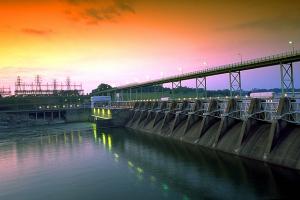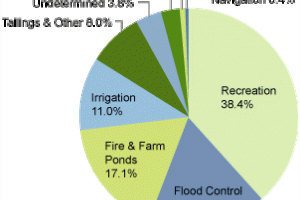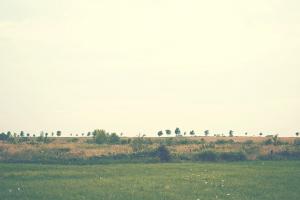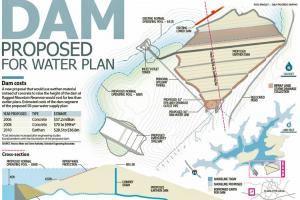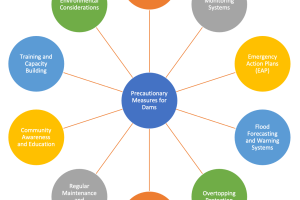Stability and Failure of Earth Filled Dams
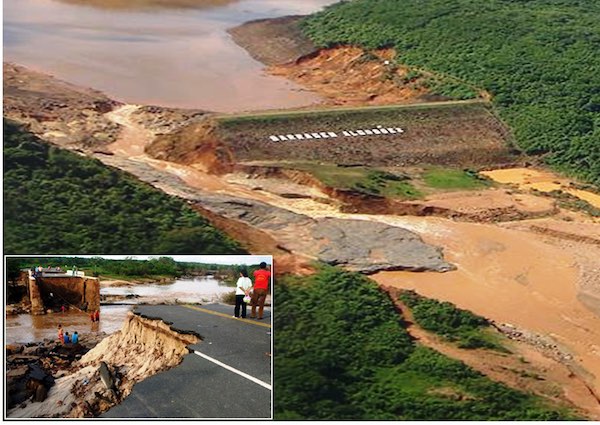
Failure of earth dams may be:
- Hydraulic Failure
- Seepage Failure
- Structural Failure
1. Hydraulic Failure:
Types of Rolled filled dams:
-
- Overtopping of dams
- Erosion of the Upstream Surface
- Erosion of the Downstream Surface
- Erosion of the Downstream toe
i. Overtopping of dams:
This type of dam is made up of only one type of material. Usually porous materials is used. These dams are easy and cheap to construct but cannot be used to make multipurpose large dams. For large multipurpose dams zoned type method is used. Over topping failures result from the erosive action of water on the embankment. Erosion is due to un-controlled flow of water over, around, and adjacent to the dam. Earth embankments are not designed to be over-topped and therefore are particularly susceptible to erosion. Once erosion has begun during over-topping, it is almost impossible to stop. A well vegetated earth embankment may withstand limited over topping if its crest is level and water flows over the crest and down the face as an evenly distributed sheet without becoming concentrated. The owner should closely monitor the reservoir pool level during severe storms.
ii. Erosion of the Upstream Surface:
Here zones of different materials are made.
Shell is used to give support and stability to the structure of dam. It is made of coarse materials and is pervious in nature.
Core is used to make the dam water tight and to reduce the seepage. Fine material is used here. Used in large dams.
iii. Erosion of the Downstream Surface:
Due to rainfall, snow and winds the downstream surface of the dam also erodes. By providing a section of coarse materials here, this erosion can be reduced or prevented.
2. Seepage Failure:
All earth dams have seepage resulting from water permeating slowly through the dam and its foundation. Seepage must be controlled in both velocity and quantity.  If uncontrolled, it can progressively erode soil from the embankment or its foundation, resulting in rapid failure of the dam. Erosion of the soil begins at the downstream side of the embankment, either in the dam proper or the foundation, progressively works toward the reservoir, and eventually develops a direct connection to the reservoir. This phenomenon is known as "piping." Piping action can be recognized by an increased seepage flow rate, the discharge of muddy or discolored water, sinkholes on or near the embankment, or a whirlpool in the reservoir. Once a whirlpool (eddy) is observed on the reservoir surface, complete failure of the dam will probably follow in a matter of minutes. As with over topping, fully developed piping is virtually impossible to control and will likely cause failure. Seepage can cause slope failure by creating high pressures in the soil pores or by saturating the slope. The pressure of seepage within an embankment is difficult to determine without proper instrumentation. A slope which becomes saturated and develops slides may be showing signs of excessive seepage pressure.
If uncontrolled, it can progressively erode soil from the embankment or its foundation, resulting in rapid failure of the dam. Erosion of the soil begins at the downstream side of the embankment, either in the dam proper or the foundation, progressively works toward the reservoir, and eventually develops a direct connection to the reservoir. This phenomenon is known as "piping." Piping action can be recognized by an increased seepage flow rate, the discharge of muddy or discolored water, sinkholes on or near the embankment, or a whirlpool in the reservoir. Once a whirlpool (eddy) is observed on the reservoir surface, complete failure of the dam will probably follow in a matter of minutes. As with over topping, fully developed piping is virtually impossible to control and will likely cause failure. Seepage can cause slope failure by creating high pressures in the soil pores or by saturating the slope. The pressure of seepage within an embankment is difficult to determine without proper instrumentation. A slope which becomes saturated and develops slides may be showing signs of excessive seepage pressure.
Seepage failure of the dams is of the following types
-
- Piping through the dam
- Piping through the foundation
- Conduit Leakage
- Piping thorugh the dam: There are two kinds of forces acting on the downstream face of the dam:
- Weight of the material
- Seepage Force
If the seepage force exceeds the weight of the material the water washes away the soil from the plate and creates a hole in the ground. This hole deepens as more and more mateial is taken away from it and extends longitudinally, making a pipe hole called "Piping in the dam".
3. Structural Failure:
3. Structural Failure of earthen dams
Structural failures can occur in either the embankment or the appurtenances. Structural failure of a spillway, lake drain, or other appurtenance may lead to failure of the embankment. Cracking, settlement, and slides are the more common signs of structural failure of embankments. Large cracks in either an appurtenance or the embankment, major settlement, and major slides will require emergency measures to ensure safety, especially if these problems occur suddenly. If this type of situation occurs, the lake level should be lowered, the appropriate state and local authorities notified, and professional advice sought. If the observer is uncertain as to the seriousness of the problem, the Division of Water should be contacted immediately. The three types of failure previously described are often interrelated in a complex manner. For example, uncontrolled seepage may weaken the soil and lead to a structural failure. A structural failure may shorten the seepage path and lead to a piping failure. Surface erosion may result in structural failure.
Not very common and not in use.
-
- Failure of downstream face during steady seepage conditions
- Failure of upstream face during sudden draw down
- Failure due to sliding of foundation
- damage due to burrowing animals
- Failure of dam due to earthquake
- Usually upper part of the dam is dry and the lower is saturated with water which gives rise to pore water pressure within the voids. Dam body is saturated - All pores / voids are filled with water, pore water pressure is induced. Effective pressure reduces and shear strength of soil decreases
- When water is suddenly withdrawn or in other words if the level of water in the reservoir reduces suddenly, the soil on the upstream face of the dam body may be highly saturated and has pore water pressure that tries to destabilize the dam and if this force is high enough, it can fail the dam.
- If the shear strength of the soil on which the foundation is built is weak though the foundation itself may be strong but due to weakness of the soil foundation may slide on the sides and in some cases the foundation itself may be not able to resist the shear force that may have increased from normal due to any reason.
- Burrowing animals - Small animals living in the holes and pits may have dug their holes anywhere in the dam body which may widen with the passage of time and can be dangerous.
- Earthquake
Minor defects such as cracks in the embankment may be the first visual sign of a major problem which could lead to failure of the structure. The seriousness of all deficiencies should be evaluated by someone experienced in dam design and construction. A qualified professional engineer can recommend appropriate permanent remedial measures.


